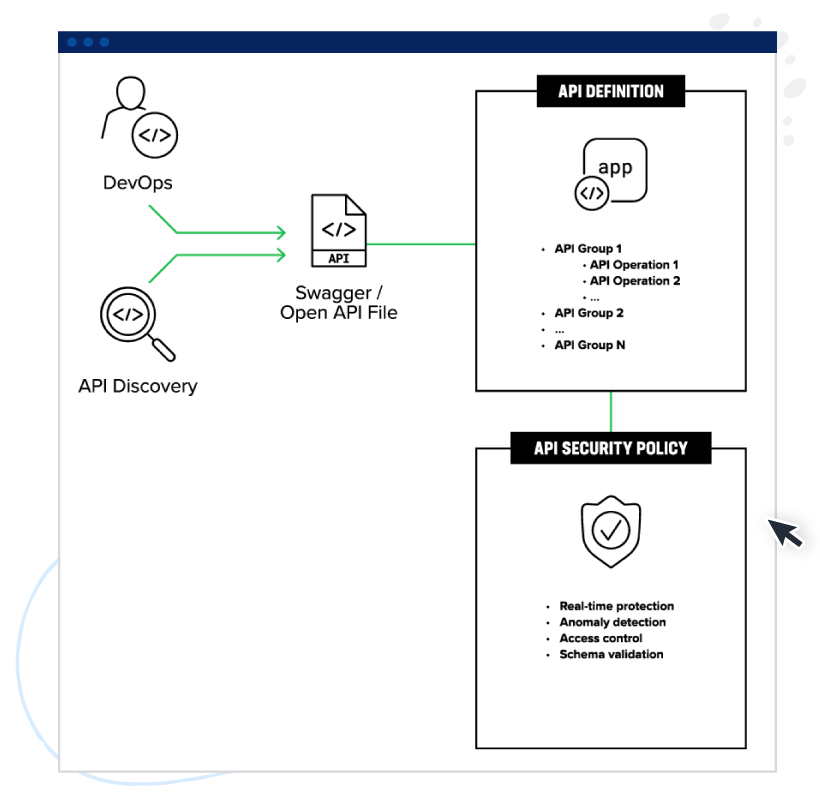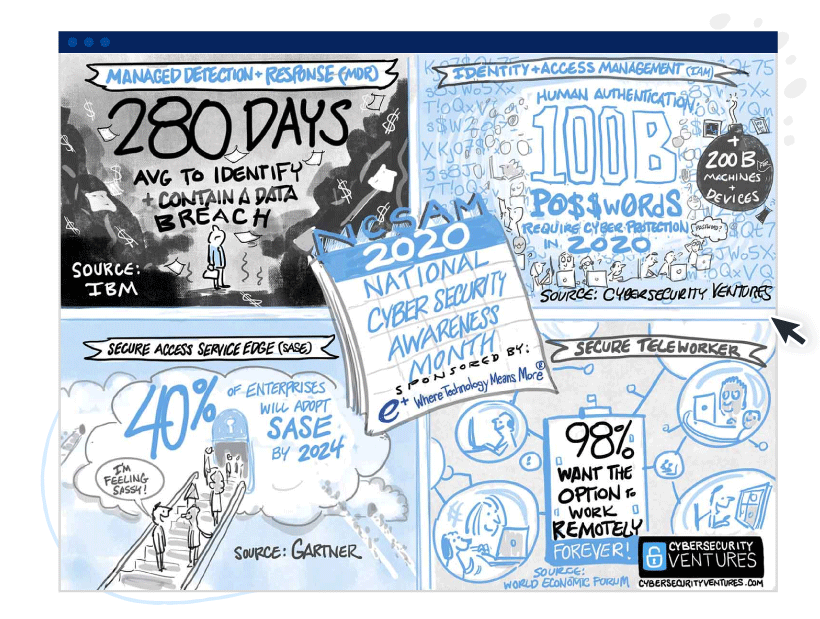When it comes to cybersecurity, complex concepts often leave both experts and laypeople confused. As a result, visual content has emerged as an effective communication tool. From breaking down intricate processes to engaging the audience’s attention, visual content is transforming the way cybersecurity is marketed, understood, and embraced.
For a cybersecurity company looking to demonstrate the value of its services, visual content appeals to a wider range of learners. For a cybersecurity company, helping clients understand what you do and how it works gives them confidence. On top of that, they can use your visual content to explain the value of your offering to others.
In this article, we delve into why visuals matter in cybersecurity content marketing and explore the benefits, strategies, and measurement of the impact of visual content in this critical field.
Why Visuals Matter in Cybersecurity Content Marketing
Visuals matter in cybersecurity content because they help potential customers learn complicated concepts quickly and thoroughly.
The Challenge of Communicating Complex Concepts
In the realm of cybersecurity, the challenge lies not only in thwarting digital attacks but also in effectively communicating intricate processes, threats, and solutions to a diverse audience. Technical jargon can be a barrier, deterring the average reader from engaging with essential information.

Technical Jargon and the Average Reader
The technical language often used in cybersecurity can alienate non-experts, hindering their understanding of crucial security measures. Visual content can bridge this gap by simplifying complex concepts, transforming them into easily digestible information.
One way visual content makes technical concepts easier to understand is by showing how different network components connect to each other. For example, it’s easy to show a firewall in front of a network segment in an infographic. It’s far more difficult to verbally explain network segmentation and how and why you’d put a firewall between two segments. In this way, visual content streamlines the learning process.
The Shortening Attention Span in Digital Consumption
The digital age has ushered in an era of shortened attention spans. In this environment, textual information alone can struggle to captivate readers. Visual content offers a visually stimulating alternative that is more likely to capture and retain the audience’s attention.
Benefits of Infographics in Cybersecurity
Infographics make explaining complex processes easier while enhancing your target audience’s recall and engagement.
Breaking Down Complex Processes
Infographics serve as a valuable tool for dissecting complicated cybersecurity processes. These visuals can transform convoluted security protocols and threat landscapes into clear, step-by-step guides that resonate with both technical experts and novices.
For example, imagine trying to explain how you establish and secure application programming interfaces (APIs), regardless of the kinds of operations each API performs. This could be challenging using words only. But the infographic below outlines:
- How APIs fit into the development process
- The connections between API groups and their operations
- The overarching role of an API security policy
Image source: F5.com
This kind of simple infographic can address questions that a customer needs answers to before proceeding with a purchase. For instance, the illustration makes it clear that a single API security policy covers all APIs and their operations. So the customer only needs one solution, regardless of the complexity of their ecosystem.
Enhancing Recall and Engagement
Human brains are wired to process visual information more efficiently than text. Infographics not only enhance recall but also drive engagement, as they present information in a visually appealing and organized manner.
Crafting Effective Cybersecurity Infographics
Crafting cybersecurity infographics that attract customers comes down to making them clear, simple, relevant, and accurate. As your content specialist builds your infographics, they’ll focus on leveraging color psychology and optimizing each graphic’s layout.
Key Elements of a Compelling Infographic
Clarity and Simplicity
An effective infographic prioritizes clarity and simplicity. Overloading the graphic with excessive information can lead to confusion, defeating the purpose of visual communication. Striking the right balance between content and design is crucial.
Relevance and Accuracy
The content of an infographic must be relevant, accurate, and up-to-date. It should convey the most vital cybersecurity information, omitting unnecessary details that could overwhelm the audience.
The infographic from Cybersecurity Magazine below is an excellent example of clarity, simplicity, relevance, and accuracy. Even though it uses diverse images to make it visually stimulating, you can clearly see the relevant statistics it’s highlighting.
Also, the infographic includes references for each stat, which vouches for its accuracy in the minds of the magazine’s target audience.
Image source: Cybersecurity Magazine
Tips for Designing Engaging Infographics
Using Color Psychology
Colors have a psychological impact and can influence how information is perceived. In cybersecurity infographics, using a balanced color palette can convey a sense of trust and security while maintaining visual interest.
Optimal Layouts and Data Visualization Techniques
The layout of an infographic should guide the viewer’s eye smoothly from one point to another. Incorporating data visualization techniques, such as charts, graphs, and icons, can simplify complex statistics and comparisons.
Incorporating Other Forms of Visual Content
Using infographics is only the beginning. You can also take advantage of video, animated, and interactive content.
Video Content and Animated Explainers
Video content, including animated explainers, is a dynamic way to convey cybersecurity concepts. Through a combination of visuals, narration, and motion, videos can illustrate real-world scenarios, threats, and solutions.
Interactive Visualizations and Tools
Interactive visualizations and tools empower users to explore cybersecurity topics on their own terms. These resources enable audiences to engage directly with content, deepening their understanding and encouraging active learning.
Measuring the Impact of Your Visual Content
To quantify the impact of your visual content strategy, use metrics to gauge effectiveness and then adjust your strategy based on the data you observe. Analyze metrics and gather feedback to refine your visual content strategy. By understanding what works and what doesn’t, you can tailor your future content to better meet your audience’s needs.
Shares, Likes, and Comments
Monitoring social media engagement metrics provides insights into how well visual content resonates with your audience. Shares, likes, comments, and retweets can indicate the reach and impact of your content.
Dwell Time and Click-Through Rates
Website analytics can offer valuable data on dwell time (how long visitors spend on a page) and click-through rates. These metrics reveal the effectiveness of your visual content in holding attention and encouraging further exploration.
The Future of Visual Content in Cybersecurity Marketing
In a landscape where a single breach can have far-reaching consequences, the marriage of creativity and technology through visual content holds the key to enhancing cybersecurity awareness and preparedness.
Visual content has emerged as a vital tool in bridging the gap between complex cybersecurity concepts and their understanding by diverse audiences. From infographics and videos to interactive tools, visual content has the power to engage, educate, and inspire action.
Experimenting with different kinds of visual content and continuously gathering feedback to improve your strategy is good. To get the experience of skilled cybersecurity specialists on your side, connect with ClearVoice’s software and technical content teams today.






